This post may contain affiliate links. Please read our disclosure policy.
The secret to this recipe for Chinese-style gluten free lo mein is in the sauce that sticks to the noodles, the juicy, tender chicken or crisp-tender vegetables, and anything else you add to it!
Make the sauce days ahead of time and store it in a jar in the refrigerator. Make it with chicken this week, vegetables and extra firm tofu next week…

Table of Contents
- What makes this recipe for gluten free lo mein the best
- The best gluten free noodles for all that delicious lo mein sauce
- Can you make this lo mein sauce ahead of time, for a last-minute dinner?
- Varieties of gluten free lo mein
- FAQs
- Substitutions for gluten free lo mein sauce ingredients
- Gluten Free Lo Mein Recipe
What makes this recipe for gluten free lo mein the best
Chinese take-out is just one of those things when you're gluten free, isn't it? It's hard to come by in a restaurant, and it's something most people tend to miss terribly once it's out of reach.
Like most recipes for restaurant-style food, this lo mein sauce tastes like the American-style Chinese takeout we all love because it has some ingredients you might not expect—like a touch of brown sugar.
I've made this sauce with different types of sweeteners, but to taste like you remember, you'll certainly need something. I like brown sugar the best since the molasses in it also adds some richness to the sauce.
The sugar also helps the sauce cling to whatever you mix into it, including all those perfectly cooked gluten free noodles. The ginger adds a little bite, too, and the dried garlic and onions, plus the scallions, give this dish that savory, full-bodied flavor.
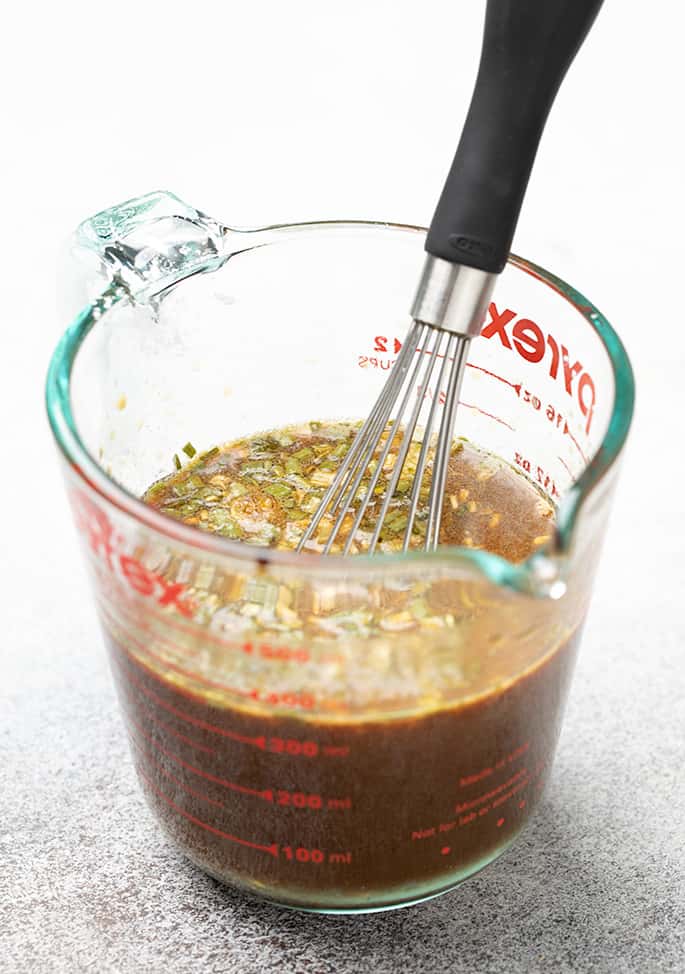
The best gluten free noodles for all that delicious lo mein sauce
As long as your noodles aren't mushy, they should be able to hold the lo mein sauce. And that's their main purpose!
I really like Thai Kitchen brand “straight cut wide rice noodles.” I often buy them by the case when I find them for a reasonable price online, but they're often available in regular and sometimes fancier grocery stores like Whole Foods.
If I'm not using those broad, flat rice noodles, I usually make lo mein using Barilla brand dried gluten free spaghetti. My kids and I actually really love spaghetti.
Even though all the pasta shapes are made using the same ingredients, somehow spaghetti always gets a “yes!” at dinnertime.
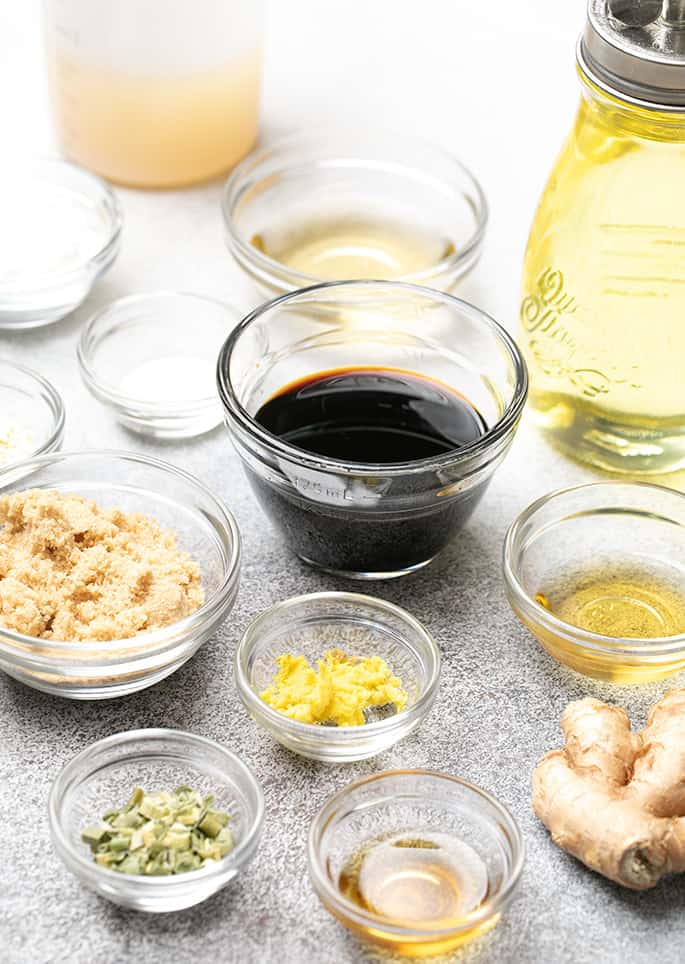
Can you make this lo mein sauce ahead of time, for a last-minute dinner?
Yes! This recipe really lends itself to being made in stages. Making the sauce ahead of time is the easiest way to do your future self a favor!
The cornstarch in the sauce will settle to the bottom of the jar as it sits. It's easy to whisk right back in before you use the sauce, though.
Even though starch will collect, it won't clump like it would if you were adding it to a large quantity of liquid. That's because the grains of starch have already each been broken up and moistened.

Varieties of gluten free lo mein
How to make gluten free chicken lo mein
This recipe already has sliced chicken, coated in cornstarch, incorporated as an optional ingredient. This method of stir-frying thinly sliced chicken makes the most tender, juicy bites.
If you happen to have some leftover cooked shredded chicken in the refrigerator, though, you can also add it along with the noodles to the lo mein sauce. Just be sure it doesn't already have another sauce or many seasonings on it that will compete with the flavors in this recipe.
How to make gluten free vegetable lo mein
My favorite vegetable to add to this dish is baby bok choy. Just separate the leaves of the bok choy and blanch it by cooking it in boiling water for about 3 minutes before draining it and putting it in ice water to stop the cooking immediately.
Other vegetables to toss in your lo mein sauce as it thickens:
- Shredded carrots or shredded cabbage will cook with the sauce
- Frozen mixed vegetables, lightly defrosted
- Fresh baby spinach will wilt in moments
- Sugar snap peas, blanched like baby bok choy above or cooked lightly in the sauce
- Bean sprouts and sliced water chestnuts are a classic combo
How to make gluten free vegetarian lo mein
Use vegetable stock in place of chicken stock in the sauce recipe, leave out the chicken, and this recipe is purely vegetarian. Add the blanched vegetables and/or roasted tofu that we use in our recipe for gluten free ramen recipe, too!

FAQs
No! Lo mein is not usually gluten free. Even if the sauce is thickened with gluten free cornstarch, like many are, conventional soy sauce is made with wheat, so it's not gluten free.
Of course, this recipe for gluten free lo mein is made with tamari or gluten free soy sauce, and rice noodles or other gluten free noodles.
Yes! I like using Taste of Thai brand wide, flat rice noodles for this recipe. They're naturally gluten free, and they're nice and chewy so they taste a lot like the egg noodles you may be used to having in the Chinese restaurant.
Yes! Any long gluten free noodle, including our homemade gluten free egg noodles, would work great with this lo mein sauce.
To make lo mein, the noodles are typically boiled, then added to the sauce as it finishes cooking. Chow mein means “fried noodles,” so the noodles are often lightly boiled but then fried until they're crisp on the outside.
For a complete explanation of the difference between lo mein and chow mein, you need to learn from someone who is an expert in Chinese food (not me!).

Substitutions for gluten free lo mein sauce ingredients
Can dry onions, garlic and ginger be replaced with fresh?
Yes! But dry is so much easier, which is why I prefer it. The general rule of thumb is to use twice as much fresh herbs, spices, and aromatics than dry.
The only ingredient of the sauce that I consider to be truly optional is the ginger. If you hate ginger, just leave it out!
Can you make this sauce with light tamari or gluten free soy sauce?
Yes! The flavor will be less rich, since those are really just more watered down versions of soy sauce.
Can you make this lo mein sauce with unrefined sugar?
Yes, in place of brown sugar, you can use an equal amount of honey or even coconut palm sugar that's been ground until fine.
I don't recommend eliminating the sugar altogether as it doesn't make a sweet sauce. Instead, it makes a balanced sauce, since the recipe is otherwise quite salty.
How to make gluten free lo mein without cornstarch
In place of cornstarch, try using arrowroot, superfine white rice flour, or even superfine “glutinous” rice flour. Any of them will help thicken this simple lo mein sauce.
Gluten Free Lo Mein
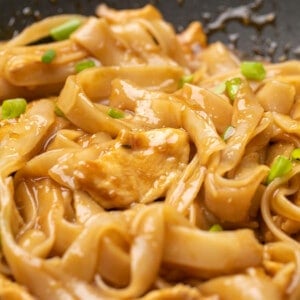
Ingredients
For the sauce
- ⅜ cup (96 g) tamari, or gluten free soy sauce
- 1.5 tablespoons (14 g) cornstarch, (or try arrowroot)
- 3 tablespoons (36 g) rice vinegar
- 1.5 tablespoons (18 g) rice wine, (can be replaced with more rice vinegar)
- 1.5 teaspoons (7 g) toasted sesame oil
- 3 tablespoons (41 g) packed light brown sugar
- 1 tablespoon minced fresh ginger, or 1 1/2 teaspoons ground
- 1 teaspoon garlic powder
- 1 tablespoon minced dried onion, or 1.5 teaspoons onion powder
- ¾ cup (6 fluid ounces) chicken stock, or vegetable stock
- 1 fresh scallion, chopped
For the lo mein
- 12 ounces dried rice noodles, or gluten free spaghetti, or gluten free linguini
- ½ teaspoon (3 g) toasted sesame oil
- 1 pound skinless boneless chicken breast, sliced thin (optional)
- 1 tablespoon (9 g) cornstarch, (optional)
For cooking
- Neutral cooking oil, like grapeseed or canola
Instructions
First, make the sauce.
- In a large measuring cup or bowl with pour spout, place the tamari and cornstarch. Whisk vigorously until the cornstarch is completely dissolved.
- Add the rice vinegar, rice wine, sesame oil, brown sugar, ginger, garlic powder, dried onion, and stock, and whisk until smooth. Add about 1 tablespoon of the chopped scallion, and mix to combine. Set the sauce aside.
Make the lo mein.
- Cook the noodles according to the package directions. Toss them in the 1/2 teaspoon sesame oil, cover, and set aside.
- If you're adding the chicken, place the sliced pieces in a small bowl, add the cornstarch, and toss to coat the chicken completely in the cornstarch.
- In a nonstick wok or large skillet, place enough cooking oil to cover the bottom of the surface in a thin layer. Add the (optional) chicken tossed in cornstarch, and place the pan over medium heat.
- Stir the chicken to break it up in the pan. Allow it to cook, stirring frequently, until no longer pink at all (about 8 minutes).
- Pour the sauce over the cooked chicken, and stir to combine. Allow it to cook, mostly undisturbed, until the sauce begins to simmer. It will thicken quickly.
- Add the cooked noodles, and toss to coat everything in the sauce. It will cling to the noodles.
- Sprinkle the remaining chopped scallions on top, and serve immediately.
Video
Notes
Nutrition information is automatically calculated, so should only be used as an approximation.



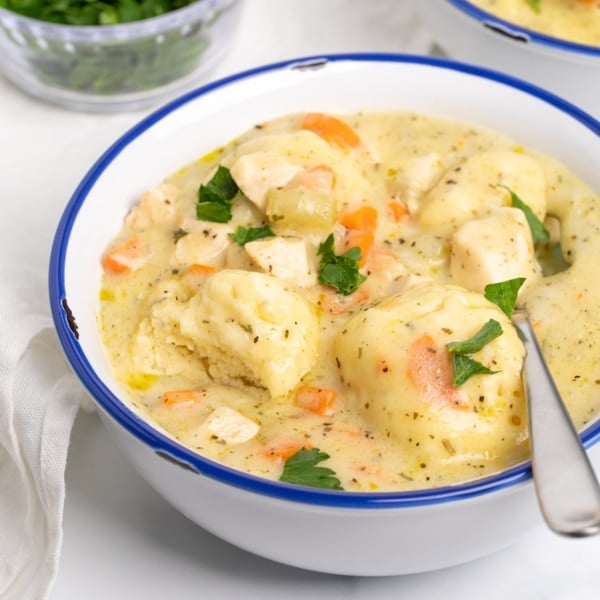
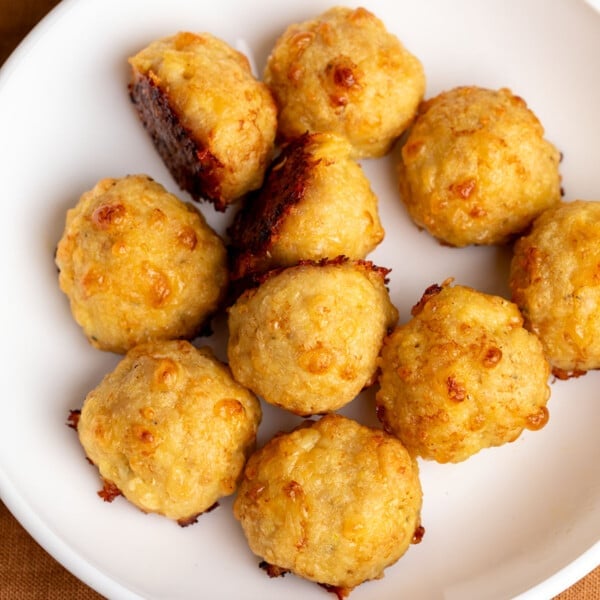
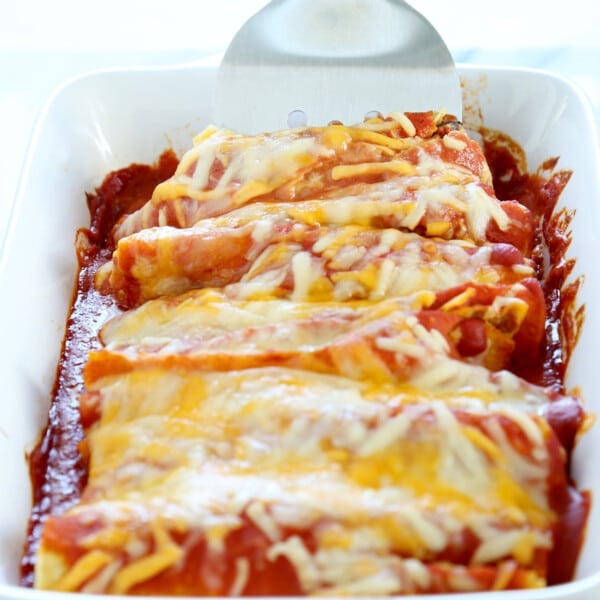









Nicole you are simply a godsend to me. I loved this recipe.I used brown rice instead of noodles since I had spaghetti X2 this week. I used regular tamari sauce. Thought it was too salty. I then refrigerated it for 5 hours, add about 2 1/2 tablespoons of additional brown sugar and a little water. I microwaved my portion. It was delicious. Thank you so much.
You’re so welcome. I could see how rice would absorb a lot more sauce than noodles, Donna, so that makes sense to me. I’m glad you were able to make it just right for your tastes. Thanks for sharing that!
My family and I love this recipe! We used thin sliced pork one night and it was also really good.
Nicole,
Hi,
What do I do for the sesame oil? I am allergic to it.
I’m afraid I really don’t know how to add that same flavor otherwise, Maria. You can use any other oil, but it won’t have the same flavor.
I used avocado oil didn’t have sesame oil on hand and added thin boneless chicken breast. It was delicious.
This is so good! We used Gfree jovial brown rice pasta. The chicken is so moist. I love the technique used here to keep it juicy. Yum!
Great to hear, Holly!
Thank you for this recipe – it was a big hit! I made it with leftover rotisserie chicken. Incredibly fast and good!
That’s awesome, Deborah! If you have leftover chicken, you’re halfway home already…
I would like to try, but have not found a gluten-free toasted sesame oil. Is this something I should really seek? It’s for a celiac diet, not just because we’re trying to avoid gluten. Thank you.
Elias, sesame oil is naturally gluten free. Toasted sesame oil, without any additives, should be as well. Eden Foods brand toasted sesame oil is gluten free, as is Oi! brand and many others. Of course, please do your own research to keep yourself safe, but this shouldn’t be a particularly difficult issue.
Sounds amazing, Nicole! I cook Asian foods frequently but this is one dish I’ve never yet been able to copy cat in gluten free form. Have you ever tried using the flat Thai or Vietnamese rice noodles for your dishes? I use them for most everything and they hold up especially well in stir fry. A fifteen to twenty minute soak in hot water, drain, then toss in a bit of oil and they’re good to go.
Yes, Robin! In fact, that’s what you see in the video and the photos in this post. My family and I adore those noodles. The Taste of Thai brand is what I use, and sometimes I can find it easily, and other times I can’t! When I find it for a good price, I buy it by the case. :)
Hi Nicole
I tried to buy from Amozon But they keep telling me my post code is not right
But it is my post code I clicked on from Australia I have tried 4 times As I was changing my address
I have a pass word everything went well till I put in my post code
Because I would love to get your book
Great recipes great book don’t mind if I miss out on the special deal Just would like your book
That sounds really frustrating, Margie. Instead of Amazon, try Book Depository. They have free worldwide shipping, and they still discount the book.
I love asian food (maybe your next cook book can be strictly “take out” foods??? ). I’m going to make this tonight if I can get it together… ALAS no Sasse meal plan today!! HAHAHAHA!
No way, Jennifer, that can’t be! The Sasse Meal Plan is to be respected!